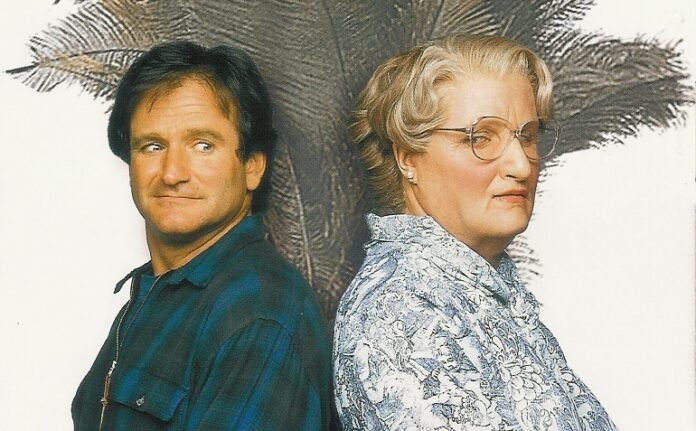In the age of the ‘kidult’, is the term ‘family film’ still an appropriate description for all-age entertainment?
Hollywood family films are very much on the agenda. Franchises like Harry Potter, Chronicles of Narnia, Shrek and Toy Story are commercial behemoths, dominating box office tables all over the world. Major studios such as Disney, DreamWorks and Pixar built their brands on family films. And many older Hollywood family films are now considered classics – Little Women (1933), Snow White (1937), The Wizard of Oz (1939), Fantasia (1940), Meet me in St. Louis (1944), 20,000 Leagues under the Sea (1954), Jason and the Argonauts (1963), Mary Poppins (1964), The Sound of Music (1965), The Jungle Book (1967), The Love Bug (1969), Star Wars (1977), E.T. (1982), Back to the Future (1985), Home Alone (1990), Mrs. Doubtfire (1993)… the list could go on, and on. Dramatically, many of these films have little in common. What unifies them, giving them a sense of shared purpose, is the fact that they were all intended to be watched and enjoyed by the whole family.
Nowadays, the concept of “family entertainment” appears somewhat archaic and out of touch with reality; it is a holdover from a time when families actually engaged in recreational activities together. This convention began to erode in the 1950s with the widespread emergence of teen culture and television. Its decline has been gradual but steady, accelerated by the emergence of numerous rival entertainment mediums and television’s aggressive targeting of diverse sub-demographics, which renders the concept of ‘child’ and ‘adult’ audiences absurdly simplistic.
For many years, producers targeted ‘family audiences’ through what children’s literature scholars call ‘dual address’. The basic metaphor was that of a see-saw, with a ‘child’ sitting at one end, and an ‘adult’ at the other; a successful family film was one which maintained an equilibrium between their respective entertainment requirements. Films like Meet Me in St. Louis and Mary Poppins focused on the entire family, offering a variety of distinct subplots, one of which may have focused on the financial or social concerns of the parents, with another tracking the mischievous antics of the children. It was a crude model which perhaps worked largely because of the lack of entertainment alternatives – and it must be remembered that, before television, cinema-going was one of the most popular recreational habits.
Although purely escapist films like King Kong (1933) had suggested an alternative way of attracting family audiences, it was Disney that popularised the now-familiar strategy of addressing children and adults as a single entity. Walt Disney once insisted that ‘in planning our picture[s], we don’t think of grown-ups and we don’t think of children, but just that fine, clean, unspoiled spot down deep in every one of us that maybe the world has made us forget and that maybe our pictures can help recall’. I call this approach ‘undifferentiated address’; such films do not offer different forms of appeal for different prospective audiences, but rather attempt to exploit universal pleasure impulses, with dazzling, seductive visuals or by appealing to the emotions with comforting, reassuring messages and ‘happy endings’.
Until the 1970s, undifferentiated address in family films was largely the province of Disney films, or lightly-regarded ‘juvenile’ fare such as Ray Harryhausen’s wonderfully inventive stop-motion productions and Irwin Allen’s child-orientated B movies of the early 1960s. The turning point was George Lucas’s Star Wars, which drew explicitly on the kiddie serials and comic books of the 1930s and 1940s. With its simple action-adventure aesthetic, it drew mass audiences of all ages, from young children and teenagers to much older demographics, and appealed – as Time magazine’s review observed – to ‘the kid in everyone’. The success of Star Wars brought about a new direction in Hollywood family films, with the Superman (1979-87) and Indiana Jones (1981-2008) franchises following swiftly in its wake. Such broad-appeal action-adventure films provided a basic template for many of today’s leading ‘family’ franchises.
But the decline of the traditional ‘dual addressed’ family film was more protracted. For one thing, the aforementioned films were highly expensive blockbuster releases, whereas more mundane narratives focusing on the family were much cheaper. Yet nuclear families still play a central role in blockbusters like E.T. and Back to the Future, as well as such lesser films as Flight of the Navigator (1986), Uncle Buck (1988) and Honey, I Shrunk the Kids (1989), and this continued into the early-1990s with the massive success of Home Alone, Hook (1991) and Mrs. Doubtfire. It was not really until the end of the 1990s, when the major Hollywood studios elected to cut down on production and concentrate on a smaller number of blockbusters, that this genre began to fade. The onus shifted to less culturally-specific, visually-impressive films (especially fantasies) with greater appeal to global audiences.
Mrs. Doubtfire was one of Hollywood’s last major (live-action) dual-addressed family films; it is also a quintessential example of the genre. In fact, it was re-watching this film as an adult, having enjoyed it many years earlier as a child, which inspired my research into the family film. My memory of it was that it was something of a juvenile slapstick comedy, heavily reliant on pratfalls and sight gags for its impact. The visual image of Robin Williams grotesquely made-up as an elderly woman with the aid of a body suit and facial prosthetics had stayed with me, as had numerous other vignettes, such as him setting fire to one of his rubber breasts while cooking, or being caught urinating by his teenage son (who is still unaware as to his true identity). This is amusing but unsophisticated fare, clearly pitched at children and puerile adults. Yet upon watching this film again as a grown man, it became apparent that the memory had played tricks. Alongside these comedic strands was a rather sad, serious and emphatically ‘adult’ storyline about a married couple who fall out of love and divorce one another, recriminations hanging heavy in the air, and the subsequent decision of a family court judge to award sole custody of their three children to the mother. Seen from this angle, Williams’s decision to inveigle his way into the family home by masquerading as an elderly nanny so that he can see his children every day is downright alarming, and his attempts to sabotage his ex-wife’s burgeoning relationship with a new man are similarly disquieting.
In some respects, Mrs. Doubtfire has not aged well. Were it not for Williams’s comedic presence and winsome affability, his character might easily be regarded as perverse. (Anecdotally, several years ago, a local cinema was showing a series of filmic literary adaptations bookended with observations delivered by academics. A colleague involved in the initiative solicited my opinion on possible future family-orientated offerings, and I suggested Mrs. Doubtfire. However, Williams’s ‘grotesque’ character appalled him to the extent that he would not entertain the idea of unleashing the film on a new generation of unsuspecting children…) The negative representation of Sally Field’s mother-and-career-woman, who spends most of the film as highly-strung and unreasonable as Williams is relaxed and carefree, is also politically regressive. Yet, in other ways, Mrs Doubtfire is commendably progressive in its political overtones. It is one of the first (if not the first) major Hollywood family film to suggest that parents divorcing may ultimately be a good thing for the welfare of their children, and may be motivated by reasons other than adultery or some other misdemeanour. Williams’s on-screen brother is also in a gay relationship, which is known about and seemingly accepted by the entire family. These two elements would perhaps raise rather fewer eyebrows today, but their presence in a major Hollywood family film – traditionally (and almost by its very nature) a socially- and politically-conservative genre – was boundary-breaking at the time.
Since the success of Pixar’s Toy Story and DreamWorks’s Shrek series, and the Harry Potter and Chronicles of Narnia franchises, Hollywood family films have tended to fall into one of two categories: animated features targeting multiple audience demographics, but often with a playful intertextuality to attract adults who might not normally attend ‘cartoons’; and blockbusters suitable for audiences of all ages and backgrounds, with relatively undifferentiated address. We have entered a new era in ‘family’ entertainment, where it is increasingly difficult to gauge where the ‘childish’ elements end and the ‘adult’ aspects begin. This erosion of previously-sacrosanct boundaries between child and adult culture is a broad social phenomenon in Western countries, and has been received with a mixture of irritation and despair by a variety of cultural critics. Prominent cultural critic Benjamin Barber, for instance, has spoken of ‘a powerful new cultural ethos’ of ‘induced childishness’ pervading all aspects of Western consumerism.
It may be that we now live in the age of the ‘kidult’. As a result, we might reasonably question whether the term ‘family film’ (which dates back to the early part of the last century) is still an appropriate description for the all-age entertainment being released under that banner, which includes films which would once have been considered ‘adult’ fare, such as Avatar (2009) and the Transformers (2007- ) films. Perhaps it is the association with tradition and domesticity that partly explains the longevity and ongoing appeal of the ‘family’ label; it promises to pull us together, rather than drive us apart. In societies where social and familial fragmentation is a major concern, one can discern the attraction of narratives which offer visions of hope and happiness, even as family films continue to move increasingly away from the wholesomeness and didacticism that once characterised the genre.
Also read: The Universe of Satyajit Ray


